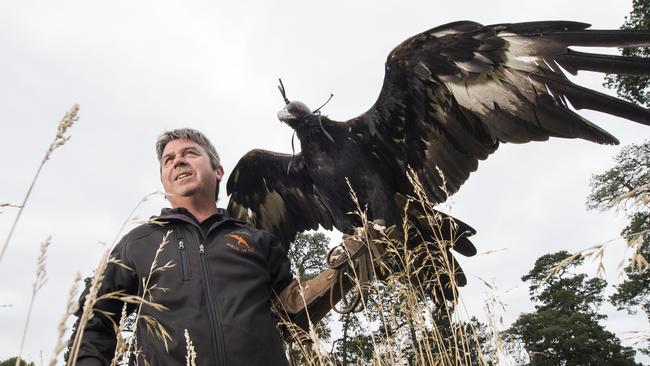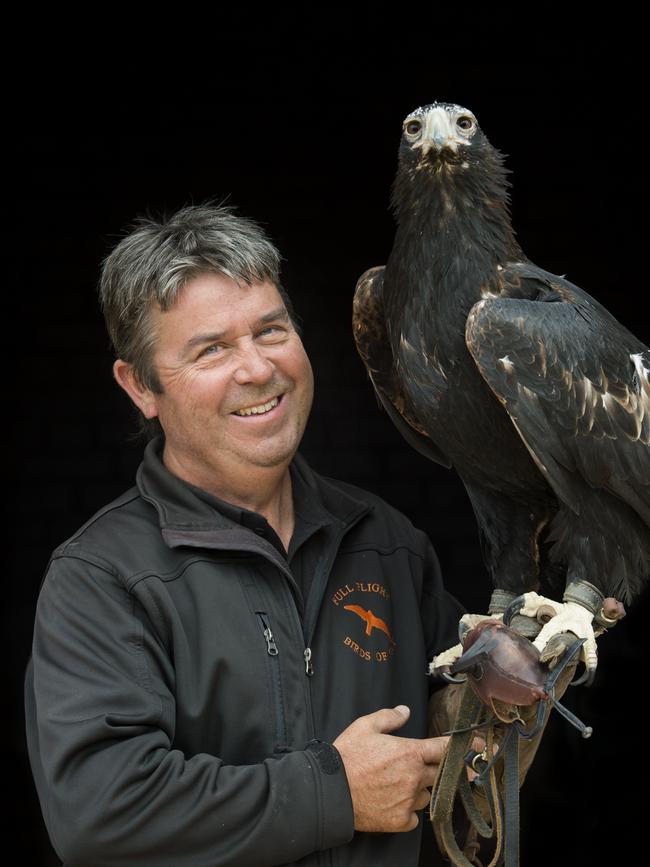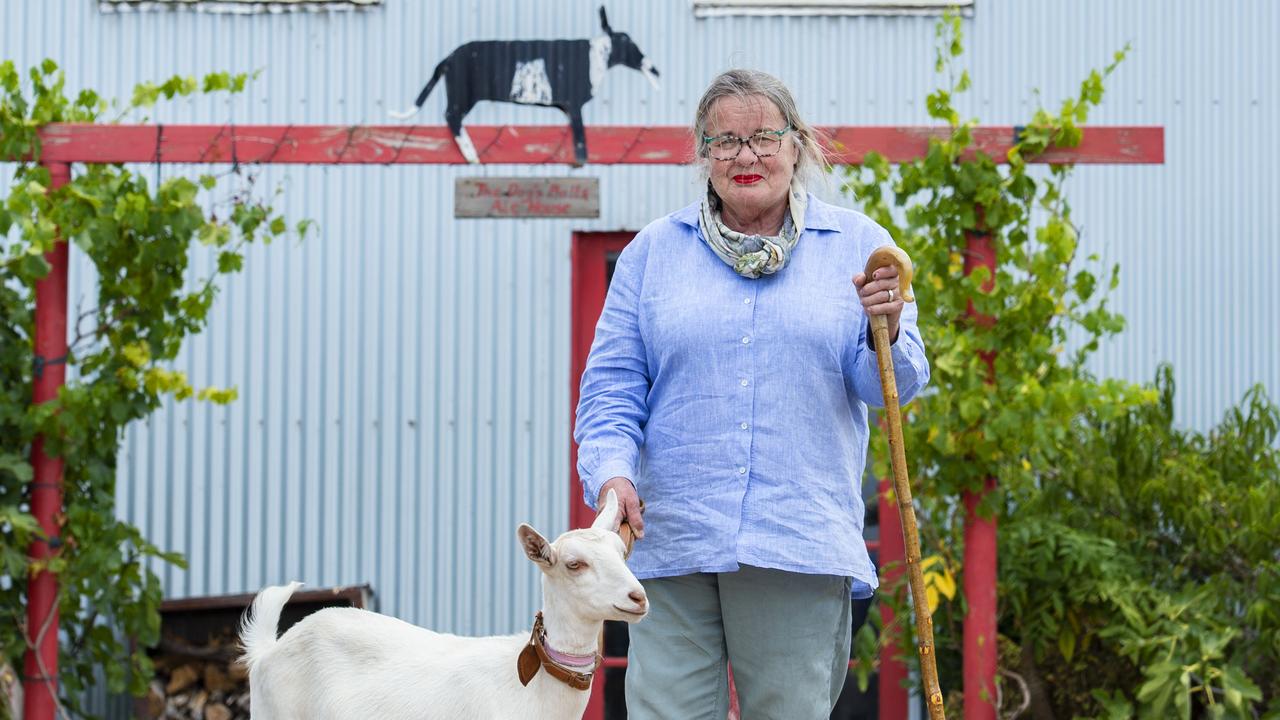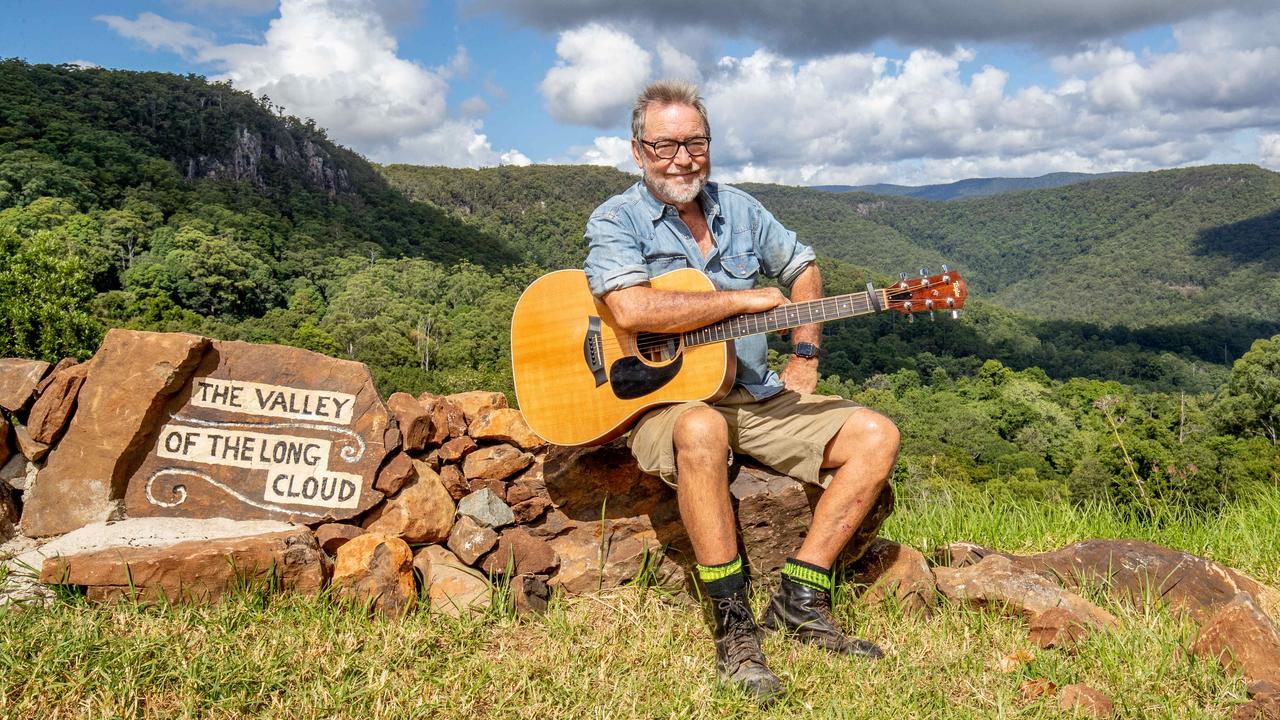Full Flight Birds of Prey Centre controlling pests from the air
Forget air guns and scarecrows. If anyone from farmers to Melbourne Cup organisers want to tackle pesky birds, Graeme Coles is your man.
FORGET air guns and scarecrows.
If farmers really want to protect their crops, Graeme Coles is your man.
Graeme runs Full Flight Birds of Prey Centre, on a 4ha property at Miners Rest outside Ballarat, and — armed with an eagle — is able to protect a crop from pest damage.
“We ran a research trial for three years on a Mildura almond farm, which was losing huge amounts of money to corellas and cockatoos eating the nuts,” Graeme says.
“We’d put up drones to see where the flocks of cockies and corellas were and then drive out in the ute and release the eagle. The birds would stay away.
“It was a success, with the research part of an evaluation showing the effectiveness of raptors on different pest species, and the economic loss of the harvest.”
Aside from farms, Graeme is the go-to raptor specialist for many pesky problems.
Most years he attends the Melbourne Cup carnival, releasing peregrine falcons on to the track before races to clear seagulls, to ensure the safety of horses, jockeys and the crowd.
“I’ve even taken an eagle into the Bird Cage to educate the public,” he adds.
At the Australian Open tennis Grand Slam, Graeme uses nocturnal barking owls to ensure Rod Laver Arena is free of seagull poop. From golf courses, warehouses to schools, and most recently the Shepparton courthouse (under attack by corellas), Graeme and his flock clear pigeons, Indian miners — even sparrows.
Given it is illegal to use birds of prey to kill wildlife in Australia, his winged predators are trained to move the feathered foes along, without hurting them.
And it is this that underscores the remarkable nature of Graeme’s work.

For nearly 40 years Graeme has run Full Flight, established as a non-profit charity when he was 16.
At the Miners Rest centre he spends countless hours training the birds for this predation work.
All up Full Flight has about 12 raptor species — mostly peregrine falcons, wedge-tailed eagles, hawks and owls — totalling 60 birds.
Most are captive bred, even given to zoos for their breeding programs, while Graeme and his team also rehabilitate injured birds for release in the wild.
Captive bred birds are also displayed to the public in small group “personal encounters” around Australia, such as medieval festivals, as well as at the centre at open days through the year, or by appointment only.
Full Flight has about seven casual staff and four volunteers, including an in-house anthropologist who educates the public about the species and the importance of their conservation.

“We try not to preach the message, but want to get across to the public the importance of protecting habitat, forests, trees. We believe the birds help connect people to the environment.
“Wedge-tailed eagles are one of the most persecuted birds of prey, but we’re seeing attitudes in the country changing, including farmers telling us they lamb close to the house now to ensure no eagles.”
The birds have been used for film and TV work, such as National Geographic and Animal Planet documentaries, an ABC bushfire series, and even as extras in the TV series Xena: Warrior Princess.
Graeme has three permits (commercial, shelter and research) and says each species and each bird requires different training.
An eagle, for instance, needs to be trained through its life, but he has trained a falcon in just four days. He adds that falconry is an ancient skill dating back 3000 years.
“Goshawks are the most difficult because they’re temperamental and sulky, but they are winners for pest control. Release them and everything flees.
“Raptors are killing machines, so there’s no love attached to their training, everything revolves around survival for them, hunting, ambush and being extremely quick.
“That means they’re highly strung.
“When we release them they are free to fly away but we train them with a lure to return.”
The centre’s food budget is not cheap — the birds prefer to eat quail, rabbit, pigeon or kangaroo, sourced from farmers or legally harvested.
He says the greatest danger for one of their flying birds is being attacked by a wild raptor, or becoming disoriented, with one bird lost for three days before it found its way home.
The 54-year-old is currently training to be a pilot and says he is fascinated with all things flying.
“We have attached GPS trackers to a falcon and tracked it flying at 150km/h and up to 6500ft (1.98km).
“But we like to keep them close, not only for their safety but because there’s no value above 2000ft because people can’t see them.”
Captive birds generally live longer than those in the wild, with one of his eagles living to 42 years and a falcon to mid-20s.
Graeme admits he has been on the receiving end of their hunting abilities, with an eagle once sinking its talons straight through his hand, and an incident with a masked owl leading to Graeme being hospitalised with septicaemia.
So aside from speed and flight, what is the fascination with raptors?
Graeme says he was about five years old when a neighbour across the street — in his home country of New Zealand — introduced him to her canaries and, “I then used to care for the orphaned ones”.
After that he became an unofficial drop-off centre for injured birds, which then led him to formally establish Full Flight at the age of 16, bringing it to Australia in 2001 and moving to the Miners Rest site about five years ago.
For a while Graeme had a career as an orthotic and prosthetic technician, but he has always maintained the birds.
“I love them so much.
“Their freedom, their primitive behaviour.
“Whether I’m flying one of my own birds or seeing one in the wild, I feel like I did when I was a kid, I’ve never lost that feeling.
“I’m very lucky to do what I love,” he says.
MORE
LOCKED AND LOADED FOR THE AERIAL FIRE FIGHT


